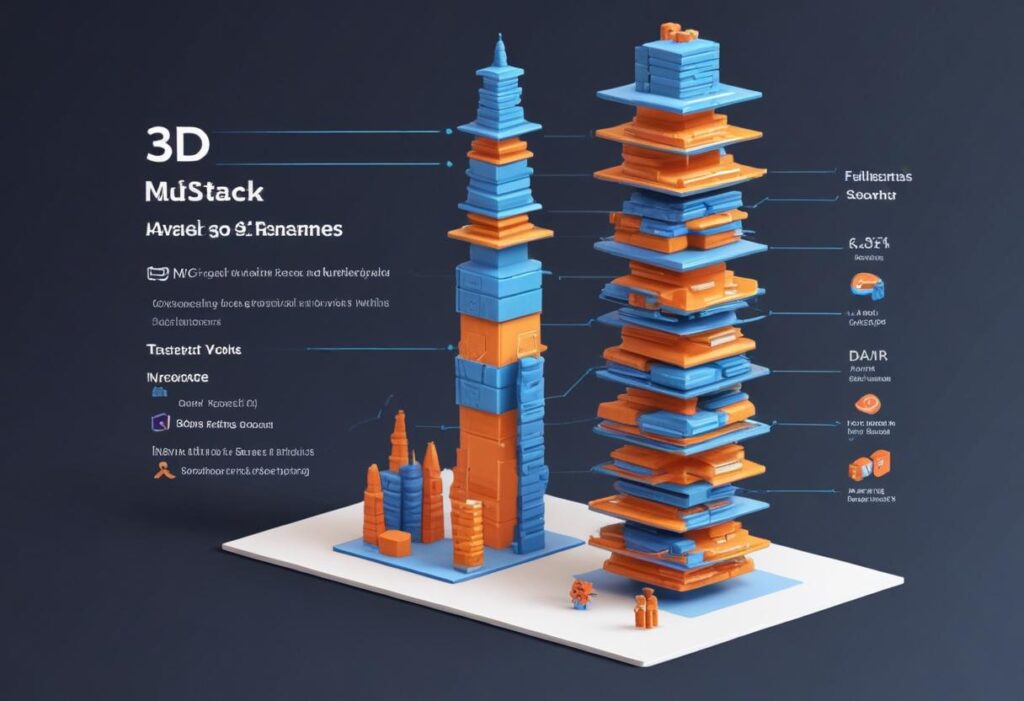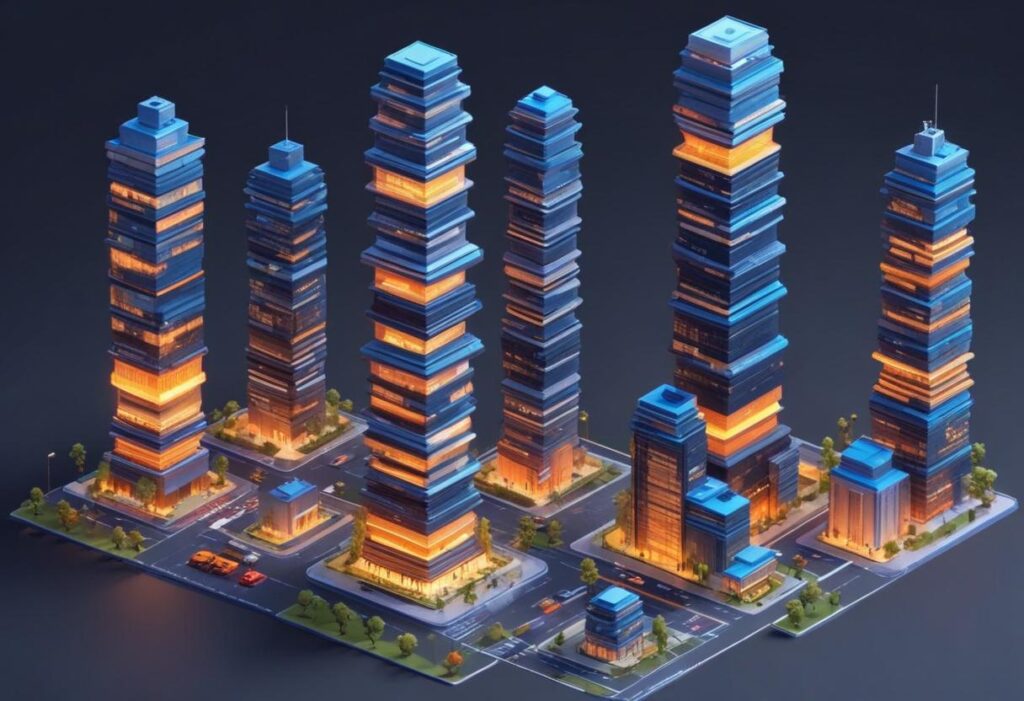Full stack development has emerged as one of the most in-demand roles in the tech industry. In 2024, companies are actively searching for developers who can manage both frontend and backend tasks seamlessly. Full stack developers possess a diverse range of skills, enabling them to work on all aspects of web or mobile applications, from databases and user interfaces to server logic and cloud deployment.
But what does it take to become a full stack developer in 2024? In this article, we’ll break down the essential skills, tools, and technologies you need to stay competitive in the ever-evolving tech landscape.

Understanding the Role of a Full Stack Developer
A full stack developer is responsible for handling both frontend and backend development, making them proficient in everything from creating visually appealing user interfaces to writing efficient server-side code. While many developers specialize in either frontend (user interface) or backend (server-side logic and databases), full stack developers bridge the gap between both.
- Frontend Development focuses on the user interface (UI) and user experience (UX) components, ensuring that the application is visually appealing and user-friendly.
- Backend Development focuses on the server, database, and application logic, making sure data flows smoothly and functionality is robust.
In 2024, full stack developers are expected to juggle a variety of responsibilities, making them versatile and highly valuable to employers.
Key Skills for Full Stack Developers in 2024
To be successful as a full stack developer, you need a well-rounded skill set that spans both frontend and backend technologies. Here are the critical skills you’ll need in 2024:
Proficiency in Frontend Technologies
- HTML5 and CSS3: The building blocks of any web application. HTML is used to structure the content, while CSS styles it to create visually appealing interfaces.
- JavaScript: The backbone of modern web development, allowing you to create interactive and dynamic experiences.
- TypeScript: An enhanced version of JavaScript that helps with cleaner code and better collaboration in larger projects.
Backend Mastery
- Node.js: A popular choice for backend development due to its scalability and the ability to use JavaScript on both the client and server sides.
- Python: Known for its readability and simplicity, Python is often used in full stack development for backend operations.
- Ruby on Rails: Another powerful backend framework known for its simplicity and speed in building applications.
Database Management
- SQL (MySQL, PostgreSQL): Essential for working with relational databases.
- NoSQL (MongoDB, Firebase): Used for applications that require flexibility in handling unstructured data.
Version Control
- Git: Every full stack developer must be familiar with Git for version control. It’s essential for managing code, collaborating with teams, and tracking project changes.
- GitHub: As the largest host for Git repositories, GitHub is a must-learn platform for collaborative development and project management.
DevOps and Cloud Integration
- Docker: For containerizing applications, making them more portable and scalable.
- CI/CD Pipelines (Jenkins, GitLab): Automating testing and deployment processes is vital for modern full stack development.

Essential Frontend Tools and Frameworks
JavaScript Libraries: React, Vue.js, and Angular
In 2024, React, Vue.js, and Angular continue to dominate the frontend landscape. These libraries help full stack developers create dynamic, fast, and scalable user interfaces.
- React: Developed by Facebook, React is one of the most popular libraries for building user interfaces, with a focus on component-based architecture.
- Vue.js: Known for its simplicity and flexibility, Vue is ideal for developers who want an easier learning curve without sacrificing performance.
- Angular: A full-fledged framework developed by Google, Angular offers everything from two-way data binding to dependency injection, making it ideal for large-scale applications.
CSS Frameworks: Bootstrap, Tailwind CSS
When it comes to designing responsive and aesthetically pleasing interfaces, CSS frameworks are a full stack developer’s best friend.
- Bootstrap: A widely used CSS framework that provides pre-designed components and templates, helping developers speed up the design process.
- Tailwind CSS: Known for its utility-first approach, Tailwind offers more customization and flexibility, allowing developers to create unique designs without writing custom CSS.
Backend Tools and Technologies
Popular Backend Frameworks: Express.js, Django, Ruby on Rails
- Express.js: A minimal and flexible Node.js web application framework that simplifies the creation of web servers.
- Django: A high-level Python web framework that encourages rapid development and clean, pragmatic design.
- Ruby on Rails: Known for its speed and simplicity, Rails remains a popular choice for developers who want to build full-featured applications quickly.
RESTful APIs and GraphQL
APIs (Application Programming Interfaces) are essential for modern web applications. REST is the traditional method of designing APIs, while GraphQL is gaining traction for its ability to give clients more control over the data they receive.
Working with Databases
A good full stack developer should be able to choose the right database for the task at hand, whether it’s structured or unstructured data.
- Relational Databases: MySQL and PostgreSQL are powerful and widely used for storing structured data in tables.
- NoSQL Databases: MongoDB and Firebase are used when applications require flexibility in storing data without strict schema enforcement.
Version Control and Collaboration Tools
Version control is crucial for managing changes in code, especially when working in teams.
- Git: The most widely used tool for version control, allowing developers to track changes, roll back updates, and collaborate efficiently.
- GitHub, GitLab, Bitbucket: These platforms facilitate team collaboration, providing tools for code reviews, bug tracking, and project management.
DevOps Tools for Full Stack Developers
Introduction to DevOps
DevOps bridges the gap between development and operations, ensuring smooth deployment and efficient application management.
- Docker: Docker helps in creating containers that package your application with all the dependencies, making it easy to deploy in any environment.
- CI/CD with Jenkins: Jenkins automates the testing and deployment process, ensuring that code changes are automatically tested and deployed.
Cloud Computing and Full Stack Development
In 2024, cloud platforms like AWS, Google Cloud, and Microsoft Azure are integral to full stack development. They allow developers to manage servers, store data, and deploy applications without having to maintain physical infrastructure.
Mobile Development Skills for Full Stack Developers
Mobile-first design is increasingly important as more users access web applications via smartphones. Full stack developers should consider building Progressive Web Apps (PWAs) that offer a seamless mobile experience.
- React Native: For building native mobile apps using JavaScript and React.
- Flutter: A UI toolkit developed by Google for building natively compiled applications from a single codebase.
Security Best Practices in Full Stack Development
Security is paramount in modern development, and full stack developers must ensure their applications are safe from vulnerabilities.
- Authentication: Implement strong authentication mechanisms like OAuth.
- Encryption: Use HTTPS and encrypt sensitive data.
- OWASP Top 10: Understand common security vulnerabilities such as cross-site scripting (XSS) and SQL injection.
API Design and Integration
APIs enable your frontend and backend to communicate. Developers should be proficient in designing RESTful APIs or using GraphQL for more complex data queries.
Testing and Debugging Tools
Testing ensures that your application functions as expected across different environments. Full stack developers should be familiar with:
- Unit Testing: Tools like Jest and Mocha for testing individual components.
- End-to-End Testing: Frameworks like Cypress and Selenium for simulating real user interactions and catching bugs.
Soft Skills Every Full Stack Developer Needs
Beyond technical expertise, full stack developers need excellent problem-solving skills, the ability to communicate with non-technical stakeholders, and effective time management to balance different aspects of the project.
The Future of Full Stack Development
In the coming years, full stack development will evolve with new technologies such as AI, machine learning, and serverless computing. Keeping up with these trends is essential for staying competitive in the field.
Conclusion
Becoming a successful full stack developer in 2024 requires mastering a wide array of skills and tools, from frontend frameworks and backend programming languages to cloud computing and security best practices. The key to success is continuous learning and adaptation as new technologies emerge.
FAQs
1. What is the average salary of a full stack developer in 2024?
The average salary varies by location but typically ranges between $80,000 and $120,000 per year in the U.S.
2. Do I need a degree to become a full stack developer?
While a degree in computer science helps, many developers are self-taught or have completed coding bootcamps.
3. How long does it take to become proficient in full stack development?
It usually takes 1 to 2 years of dedicated learning and practice to become proficient.
4. Which programming language should I start with for full stack development?
JavaScript is a great starting point, as it can be used for both frontend and backend development.
5. What is the best way to stay updated with new full stack technologies?
Follow industry blogs, join developer communities, and participate in online courses or certifications.
